Safety in the Air: The Latest in Aviation Head-up Displays (HUDs)
In aviation, head-up displays (HUDs) have been used for decades by military pilots and have now become fairly commonplace in both large commercial aircraft and private planes. HUDs present critical navigation, flight, and aircraft energy management data on a screen at the pilot’s eye level, so they don’t have look down at their instruments and take their eyes off the surrounding environment. HUDs have been shown to reduce pilot workload, increase situational awareness, and reduce accidents.
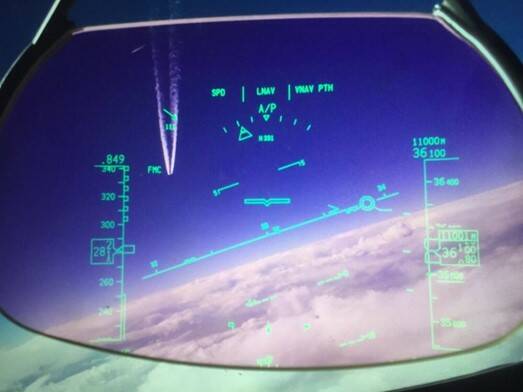
A HUD shows information from the primary flight display on a transparent panel in the pilot’s line of sight. (Image: Virgin Atlantic)
Also referred to as an enhanced flight vision systems (or EFVS), HUDs can be particularly useful during takeoff and landing, which are typically the most dangerous parts of any flight. For example, using a HUD for guidance can reduce tailstrikes on takeoff (when a pilot pulls up too quickly and the tail of the plane hits the ground).1 During landing, a HUD system can account for factors like crosswinds and project an ideal landing trajectory for a pilot to follow. One landmark study by the Flight Safety Foundation showed that HUD-type systems could have prevented or mitigated 38% of commercial, business, and corporate airplane accidents during a 13-year period.2

A passenger aircraft forced to pull up to take a second pass after failing to land successfully in foggy conditions.
These benefits have made the commercial aviation industry a key driver of growth in the HUD market, projected to reach USD $2.18 billion by 2024, at a rate of 7.53% CAGR.3 “HUDs help pilots during takeoff and landing in uncertain environmental conditions such as foggy weather. Moreover, most aviation administrations around the world have mandates on the use of enhanced flight vision systems to reduce accidents and increase passenger safety. As the aviation industry has in the past accounted for a major share of the HUD market, an increase in the orders for new-generation aircraft will also drive the growth of the HUD market.”4
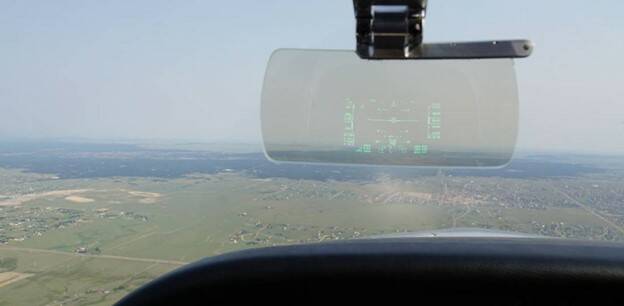
An after-market HUD (the MyGoFlight's SkyDisplay) installed in the cockpit of a small private plane. (Photo credit: Matt Thurber)
The State of Aviation HUDs
A few of the latest developments in aircraft HUDs include:
- More display area. When the company designed its Dreamliner 787 aircraft, Boeing set out to make the cockpit the most comfortable, clean, and simplified for pilots. One aspect of the design was the HUD system. Instead of just one for the pilot, the 787 has two HUD panels, one each for the pilot and co-pilot. The HUD panels are also larger than standard dimensions. Designed by Rockwell Collins, the 787 has more than double the size of the display area as the 777.5
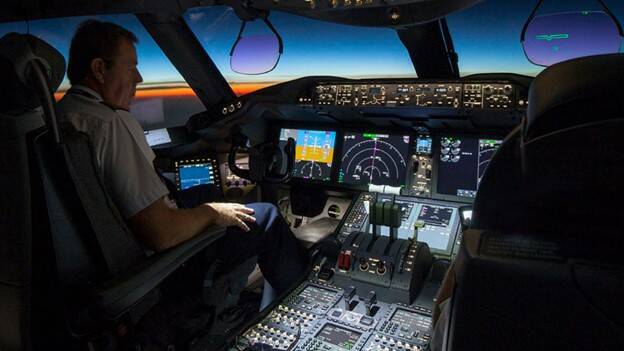
Rockwell Collins HGS-6000 HUDs installed in the cockpit of a Boeing passenger jet. (Image: Collins Aerospace)
- Digital HUD displays. CRT displays have persisted in the aviation industry long after the consumer and automotive display industries transitioned to newer technologies. For example, the US Air Force's F-22 Raptor jet adopted all-digital HUDs only in 2020. "The upgrade removes the CRT image source and instead uses Digital Light Engine (DLE) technology to implement a more advanced HUD that is placed immediately in front of the pilot’s line of sight.”6
- Synthetic and Enhanced Vision. Embraer's Praetor jets now feature the industry's first system that combines a traditional HUD with both enhanced and synthetic vision features. Enhanced vision systems incorporate information from various sensors on the aircraft (e.g., near-infrared cameras, millimeter wave radar) to provide more information to pilots in limited visibility environments. Military pilots have long used infrared goggles for night vision, for example. Synthetic vision refers to the use of algorithms to generate 3D images to provide more intuitive visualization to the pilot of their environment.
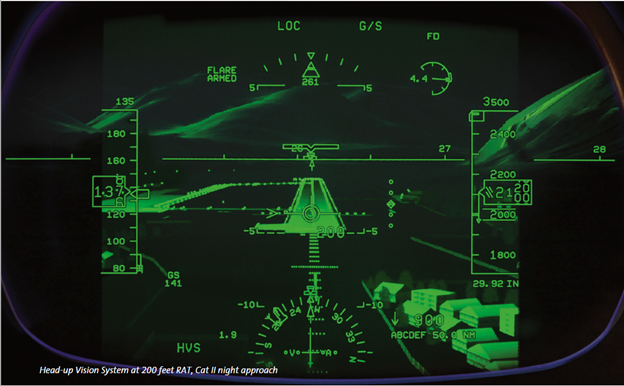
A HUD with enhanced and synthetic vision: Rockwell Collins new Head-up Guidance System (HGS™) and its multi-spectral EVS-3000 enhanced vision system. (Image: Rockwell Collins)
Potential for Augmented-Reality HUDs
Although military aircraft were first to adopt them, HUDs have become common in automobiles as they provide many of the same benefits for drivers as they do for pilots: situational awareness and being able focus on the outside environment. In the automotive industry, there is increasing interest in augmented-reality HUDs (AR HUD) that dynamically map virtual images to real-world objects in the environment, using a large field of view on the car’s windshield.
In aviation, holographic optics and AR HUDs are still a bit further out. A research engineer from Thales explains: “Across both the automotive and aviation sectors, right now the design of large field-of-view head-up displays – which are increasingly required for augmented reality applications – is limited by the necessarily large size of the optical components."7
For now, aviation HUDs will continue to be transparent screens mounted in front of the windshield, or displays within helmets for military pilots (also called helmet-mounted, head-mounted displays, or HMD).
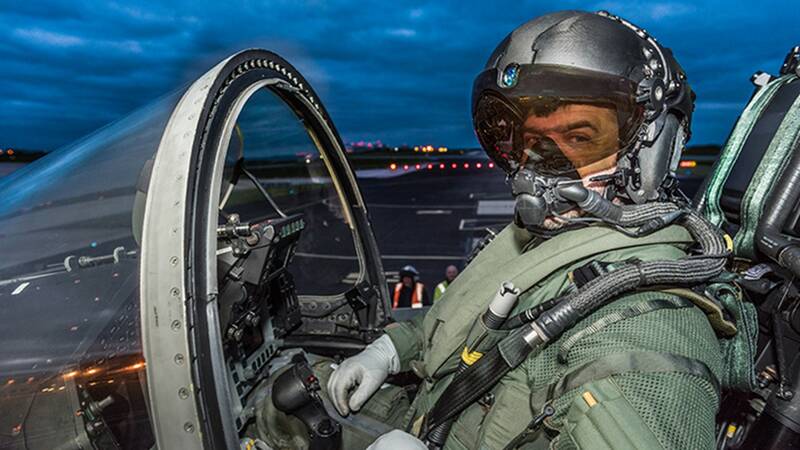
The Striker II military helmet mounted display combines a 40⁰ field of view, daylight-readable color display and integrated night vision. (Image: BAE Systems)
Ensuring HUD Quality & Performance
To ensure that HUDs are serving their intended purpose, there are multiple considerations—design, form factor, symbology, display quality—that must be carefully addressed. Pilots rely on vision to obtain more than 90% of the information relevant to flying an aircraft.8 This means that any cockpit display system must be attuned to the science of human visual perception. HUDs must be evaluated as they will be seen by human users. For example, HUD projections must be tested for proper alignment and in-focus binocular viewing, since the visual processing system in our brains combines two slightly different images captured by each eye.
Additionally, light and color must be vivid enough to be clearly discernible from surroundings in any lighting condition. Low-quality projections put aircraft at risk if operators are unable to interpret poorly projected objects in the viewing area of the display. This can lead to misinterpretation, loss of critical environmental data (such as navigation, object proximity, and other alerts), and pilot distraction.
To accurately assess the critical visual qualities of a HUD, a rigorous inspection regimen is needed that incorporates photometric or colorimetric measurement and dimensional inspection with a close match to human visual perception. An optical (image-based) measurement device and complementary test and measurement software can be used to inspect HUD projections for a range of visual criteria, and at several points within the eyebox area (to account for the scope of potential viewing angles). Radiant Vision Systems has provided the leading solutions for conventional display, near-eye-display (NED), and HUD testing in consumer electronics, automotive, and aerospace industries, with equipment advantages that optimize testing speed and simplicity.
Radiant's ProMetric® Imaging Photometers and Colorimeters are designed to simulate human visual perception of light and color (based on standard CIE color-matching functions). Systems include benefits for automated HUD measurement such as electronic lenses and dynamic calculation of virtual image distance. Our TT-HUD™ Software offers manufacturers a HUD test library, API, SDK, and automated pass/fail test sequencing to ensure the quality and performance of aviation HUD displays.
To learn more about aviation HUD design and quality assurance considerations, read the article “Quality Considerations for Aviation Head-Up Displays (HUDs)”, published in Aviation Today.
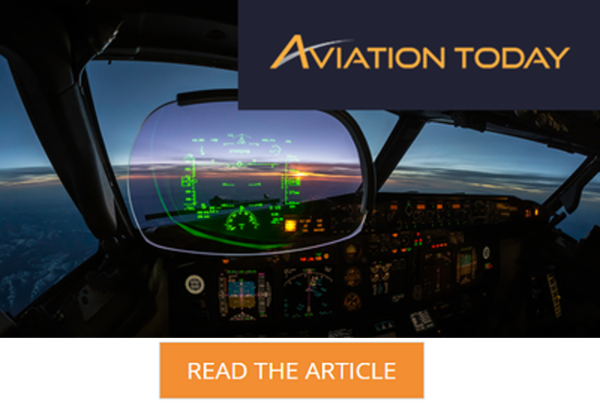
CITATIONS
- Davies, A., “High-Tech Screens for Pilots are Making Your Flights Shorter and Safer,” Business Insider, June 28, 2013.
- “Heads Up: HUDS Could Have Been A Factor In Many Aircraft Accidents,” Aero News Network, April 27, 2010.
- “Increasing Demand From Commercial Aircraft to Boost Market Growth,” reporting by BusinessWire, February 12, 2020, on Global Heads-Up Display (HUD) Market 2020-2024 report published by Technavio
- Ibid.
- “Under the HUD”, Defence & Security Systems International, July 10, 2020.
- Bailey, J., “Why The Boeing 787 Dreamliner Has a Head-Up Display,” Simple Flying, May 7, 2021.
- “How holographic optics could be the future of head-up displays”, Thales Aerospace Blog, September 27, 2019. (Retrieved May 13, 2021)
- Nichol, R. J., “Airline Head-Up Display Systems: Human Factors Considerations,” International Journal of Economics & Management Sciences, 2015, Vol 4:5. DOI: 10.4172/2162-6359.1000248
Join Mailing List
Stay up to date on our latest products, blog content, and events.
Join our Mailing List
